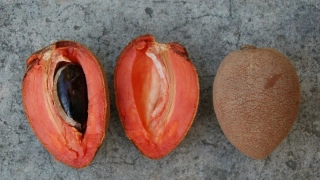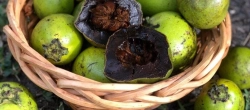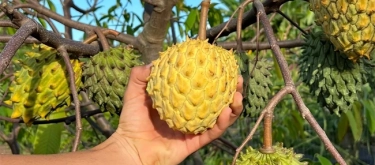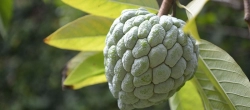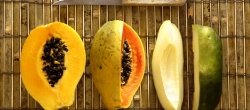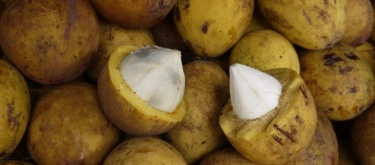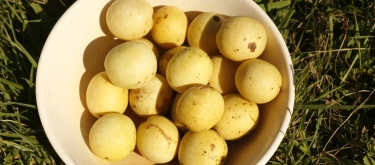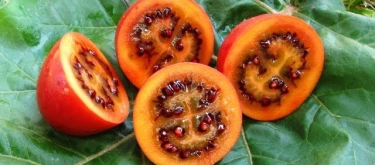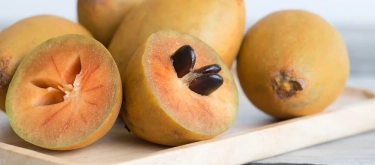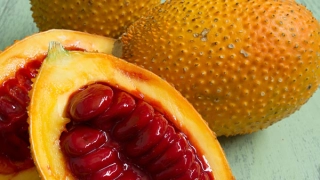Canistel: Taste Profile, Aroma, Benefits and Health Risks
Canistel (also known as Eggfruit or Yellow Sapote; Pouteria campechiana) is a tropical fruit native to southern Mexico and Central America. Belonging to the same botanical family as Sapodilla, Canistel is cherished for its rich, creamy texture and sweet, custard-like flavor, making it popular throughout tropical regions and increasingly sought after globally.
Canistel is generally safe, but individuals sensitive to latex may experience allergic reactions. Excessive consumption may lead to digestive discomfort due to its high fiber content. Pregnant women can consume it safely in moderation.
What does Canistel taste like?

Complete Sensory Description:
Taste
Canistel has a sweet, delicately nutty taste with pronounced notes of sweet potato, pumpkin, mango, and hints of caramel, imparting a rich, dessert-like quality.
Aroma
The fruit exhibits a mildly sweet aroma reminiscent of pumpkin pie, roasted sweet potatoes, and subtle tropical fruit notes with gentle floral undertones.
Texture
Canistel’s texture is remarkably smooth, dense, and creamy, similar to a boiled egg yolk or custard. When ripe, it is velvety and soft, easily scoopable with a spoon.
Appearance
The fruit varies in size from small oval to large heart-shaped forms, typically measuring 6–12 cm long. The skin color ranges from bright yellow to orange when fully ripe. Internally, the pulp is deep golden-yellow, surrounding 1–4 large, shiny, brown seeds.
In-depth Flavor Analysis:
Canistel’s indulgent flavor profile emerges from its combination of natural sugars (primarily sucrose), carotenoid compounds, and a balance of subtle acids. High carotenoid content (such as β-carotene) contributes to both the fruit’s vibrant color and its rich, sweet-potato-like flavor nuances. The presence of volatile compounds, including vanillin and ethyl butanoate, lends gentle aromatic sweetness, reminiscent of caramelized sugar. The maturity stage significantly impacts taste and texture; fully ripened Canistel fruits develop optimal sweetness and creamy texture due to enzymatic softening and starch-to-sugar conversion.
Varieties and Culinary Applications:
While Canistel varieties differ slightly in shape, sweetness, and texture, they share culinary versatility:
- Fresh Consumption: Typically enjoyed fresh, scooped directly from the skin.
- Desserts: Ideal for custards, puddings, ice creams, cakes, pies, and milkshakes, leveraging its naturally sweet, creamy consistency.
- Beverages: Blended into smoothies, shakes, or creamy beverages.
- Baking: Used similarly to pumpkin puree, adding moisture, sweetness, and flavor to baked goods.
Selection and Storage:
Select Canistel fruits that have evenly colored bright yellow or orange skin and yield gently to pressure, indicating ripeness. Avoid bruised, cracked, or overly firm fruits. Store ripe Canistel at room temperature for immediate consumption or refrigerate for 2–3 days. Pulp freezes exceptionally well for longer storage, maintaining its texture and flavor.
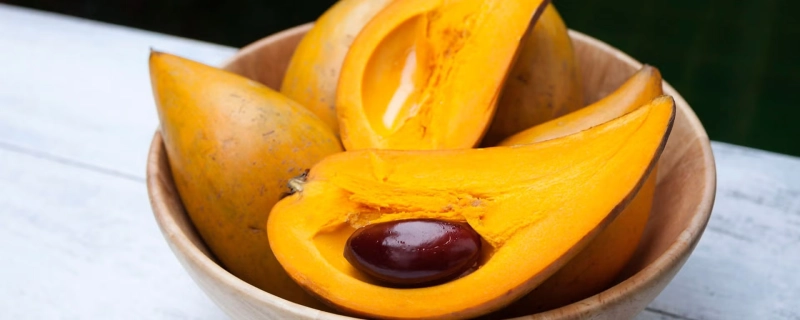
Nutritional Insights:
Canistel is highly nutritious, providing significant amounts of dietary fiber, vitamin C, vitamin A precursors (β-carotene), iron, potassium, and antioxidants. Regular consumption may effectively address vitamin A deficiencies, supporting improved vision, skin health, and immunity. Its iron content makes Canistel beneficial in preventing or reducing anemia, particularly in populations prone to iron deficiency.
Expert Insights & Culinary Tips:
- Ripeness Indicator: Ideal ripeness occurs when the fruit becomes soft and yields easily to gentle pressure. Unripe fruits can cause astringency or dryness in the mouth.
- Flavor Combinations: Canistel pairs excellently with coconut milk, cinnamon, vanilla, nutmeg, and dairy products, enhancing dessert-like dishes.
- Texture Use: Canistel's creamy consistency makes it an excellent natural thickener for smoothies, sauces, and custards.
Interesting and Curious Facts:
- The name "Eggfruit" derives from its yolk-like color and creamy, egg-yolk texture, which gives it a distinctive identity among tropical fruits.
- Traditionally used in Central American folk medicine to promote digestive health and provide nourishment.
- Canistel is closely related botanically to Sapodilla, Mamey Sapote, and Abiu, all members of the Sapotaceae family, characterized by their sweet, creamy fruits.
Harm and Dietary Considerations:
Moderation is advised due to Canistel’s high fiber content, as excessive intake may cause bloating or digestive discomfort. Individuals sensitive to latex or related fruits should consume cautiously. Pregnant and breastfeeding women can safely consume moderate quantities.
Religious Dietary Considerations:
Canistel fruit is universally acceptable and has no known dietary restrictions within major religious dietary guidelines, including Halal, Kosher, Hindu, and Buddhist diets.
Final Thoughts & Sensory Journey:
Canistel offers a unique and indulgent sensory experience with its custard-like texture, naturally sweet, comforting taste, and appealing golden color. Its versatility in culinary applications and nutritional richness makes it an attractive, nourishing addition to any diet.
Resources:
- "Tropical Fruit Processing" edited by Jethro Jagtian (Academic Press, 2012)
- "Edible Medicinal and Non-Medicinal Plants" by T.K. Lim (Springer, 2012)
- "Fruits of Warm Climates" by Julia F. Morton (Echo Point Books, 1987)
